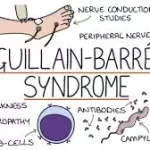Tuesday, August 28, 2024 – Recent studies from France and Germany have highlighted the significant, negative impact of urban noise pollution on heart health, particularly among those already suffering from cardiovascular conditions. The findings underscore the urgent need to address noise pollution as a public health concern.
The German study, conducted in Bremen, involved 430 consecutive patients aged 50 or younger who had experienced acute myocardial infarctions (MI). These patients were admitted to a nearby heart center, where researchers assessed their residential noise exposure. The study revealed that these individuals were exposed to higher levels of noise compared to the general population in the same region. Remarkably, patients with lower Cardiovascular Disease (CVD) scores, indicating fewer traditional risk factors like diabetes or smoking, showed significantly higher noise exposure than those with higher CVD scores.
This suggests that noise pollution may play a more critical role in the cardiovascular health of younger people, particularly those considered low-risk by conventional assessment methods. The study’s findings raise concerns about the potential underestimation of cardiovascular risk in this demographic.
In France, an independent study led by Professor Marianne Zeller of the University of Burgundy and the Hospital of Dijon focused on the impact of noise exposure on prognosis following a first MI. The ENVI-MI research involved 864 patients who had been hospitalized for an acute MI and survived at least 28 days post-event. The study tracked the patients’ health outcomes over one year, with a particular focus on the effects of urban noise exposure.
At the one-year follow-up, 19% of the participants had experienced a major adverse cardiovascular event (MACE), including cardiac mortality, rehospitalization for heart failure, recurrent MI, emergency revascularization, stroke, or angina. The average noise levels at the patients’ home addresses were measured daily, with daytime levels averaging 56.0 A-weighted decibels [dB(A)] and nighttime levels at 49.0 dB(A). These noise levels, though moderate, are typical for a large portion of the European population.
The study found a striking association between nighttime noise exposure and a worse prognosis. Specifically, for every 10 dB(A) increase in nighttime noise, the risk of MACE rose by 25%, even when controlling for air pollution and socioeconomic status. Professor Zeller emphasized the importance of these findings, stating, “These data provide some of the first insights that noise exposure can affect prognosis. If confirmed by larger prospective studies, our analysis could help identify new opportunities for environment-based secondary prevention strategies, including noise barriers for high-risk MI patients.”
These studies collectively highlight the need for greater awareness and action regarding the harmful effects of urban noise pollution on heart health. As more evidence emerges, it may pave the way for innovative approaches to protecting vulnerable populations from this often-overlooked environmental hazard.











